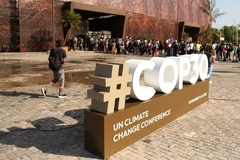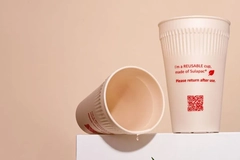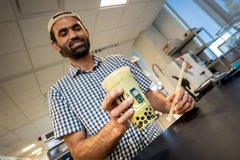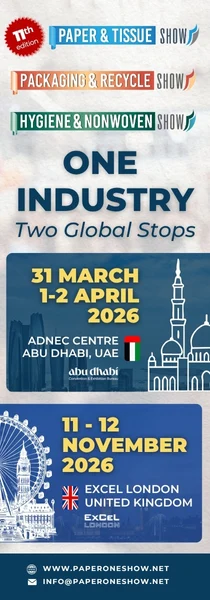Inside AmFiber: Amcor to “redefine what is possible” for paper-based packaging
01 Feb 2022 --- Amcor is launching a paper-based packaging platform for the confectionery and snack markets and other applications. The solutions are recyclable in most paper streams, contributing to the company’s pledge to make all its packaging recyclable or reusable by 2025.
The first AmFiber product launch in 2022 will be a recyclable package delivering a high barrier against oxygen and moisture for snacks and confectionery customers in Europe.
“Amcor has a rich history in paper and cardboard manufacturing. We are adding to our portfolio with this new product family and building on our track record of working across multiple materials and applications to benefit our customers,” Clifton O’Neal, Amcor’s director for media relations, tells PackagingInsights.
“We are well on our way to meeting our pledge of making all our products recyclable or reusable by 2025, and you will see AmFiber innovations contribute to our goals.”
O’Neal confirms that the first product under the AmFiber platform for the confectionery and snack markets is “recyclable in most countries.” Recycling tests have shown that over 80% of the content is recovered in the recycling process.
Pushing the possibilities
Amcor says it will gradually extend the paper-based offerings into a wide variety of applications, such as coffee, drink powders, seasoning and soups, and into the Americas and Asia-Pacific regions.
AmFiber solutions will join the packaging giant’s other paper-based products introduced recently, including solutions for butter and margarine in Latin America, cheese in Europe and confectionery in Australia.
 AmFiber is expected to contribute to Amcor’s pledge to make all its packaging recyclable or reusable by 2025.“AmFiber products will combine Amcor’s expertise across materials and redefine what is possible with paper-based packaging,” continues O’Neal.
AmFiber is expected to contribute to Amcor’s pledge to make all its packaging recyclable or reusable by 2025.“AmFiber products will combine Amcor’s expertise across materials and redefine what is possible with paper-based packaging,” continues O’Neal.
“For instance, paper is typically a porous material with minimal barrier properties. The first product introduced under the AmFiber platform delivers increased moisture barrier, providing greater protection and longer shelf life for moisture-sensitive products.”
Additionally, machine tests have shown the first AmFiber product for snacks and confectionery runs easily on producers’ existing lines and avoids tearing and slowing down the line – issues common with other paper-based packaging.
Cross-material responsibility
Although Amcor is expanding its paper-based packaging offering, it will continue innovating with other packaging materials. “First, Amcor is a world leader in developing and producing responsible packaging,” says O’Neal.
“Amcor has deep expertise in paper, aluminum and plastic, and we aim to provide customers with the best packaging solutions, using the materials most suited for their needs.”
Ron Delia, Amcor’s CEO, adds that Amcor’s long-term experience in paper and carton packaging was the basis for launching the AmFiber platform.
“Amcor has a proven history of delivering ground-breaking innovation to support our customers’ growth aspirations. This family of differentiated paper-based products builds on Amcor’s extensive track record across multiple materials and applications,” he notes.
The introduction of the AmFiber platform coincides with the fourth anniversary of Amcor’s 2025 pledge to develop all of its packaging to be recyclable or reusable and to increase its use of recycled content. AmFiber will debut in 2022 with a high barrier package for snacks and confectionery in Europe.
AmFiber will debut in 2022 with a high barrier package for snacks and confectionery in Europe.
The company was one of over 70 financial institutions and businesses to release a joint statement calling for a legally-binding global treaty on plastics pollution.
Fiber-based frenzy
Innovation in plastic-replacement fiber-based solutions is proliferating as brands explore plastic waste escape routes and new connections with the enlarging eco-conscious consumer base. Full-scale paper packaging conversions are occurring even in technically challenging markets like confectionery, exemplified by Nestlé’s Smarties.
According to Innova Market Insights, a majority of global consumers believe paper packaging boasts “good” (36%) or “excellent” (35%) recyclability. Meanwhile, less than half of global consumers say plastic packaging has “good” (29%) or “excellent” (17%) recyclability.
In similar innovation, Coveris revealed last year that it is converting a “potentially revolutionary” new paper into flexible packaging for dry foods. The material’s barrier properties are reportedly competitive with conventional plastic, mitigating food waste.
By Joshua Poole











